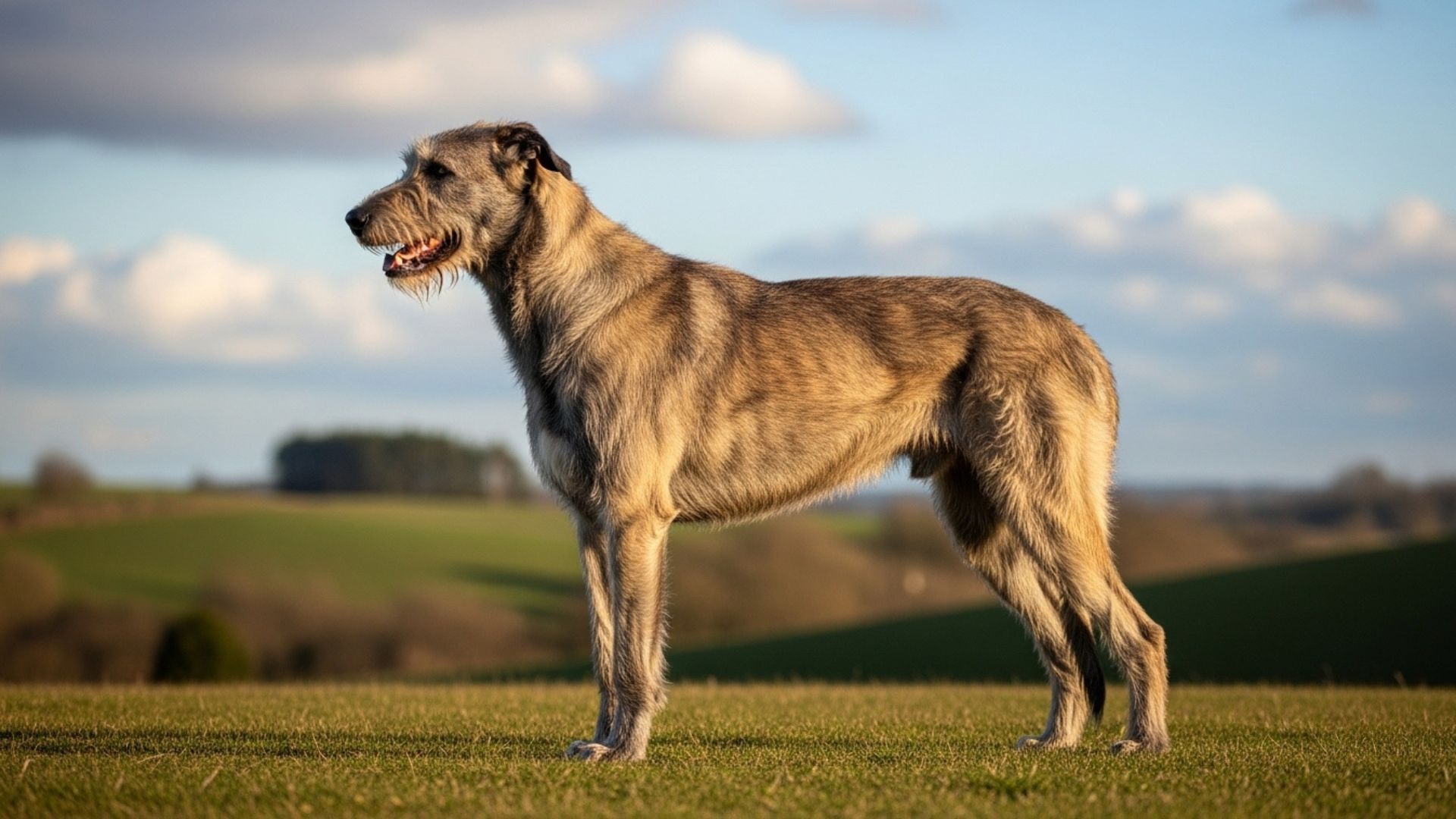Some rare breeds are known for their short life spans, often due to genetics, size, or health factors. While they may not live as long as other breeds, their unique characteristics make them incredibly special companions.
Health issues, such as heart issues or joint problems, can contribute to the reduced longevity of these rare breeds. However, despite their shorter time with us, many owners cherish the deep bonds and unforgettable moments shared with these dogs.
If you’re considering a rare breed known for a short life span, understanding the factors behind their lifespan can help you provide the best care possible. These breeds typically have shorter life expectancies, but they leave a lasting impression with their affectionate nature and larger-than-life personalities.
Rare Dog Breed Known For Their Short Life Span
Below are the rare dog breeds with shorter life spans, including the factors that contribute to their limited years and what makes them unique.
1. Irish Wolfhound
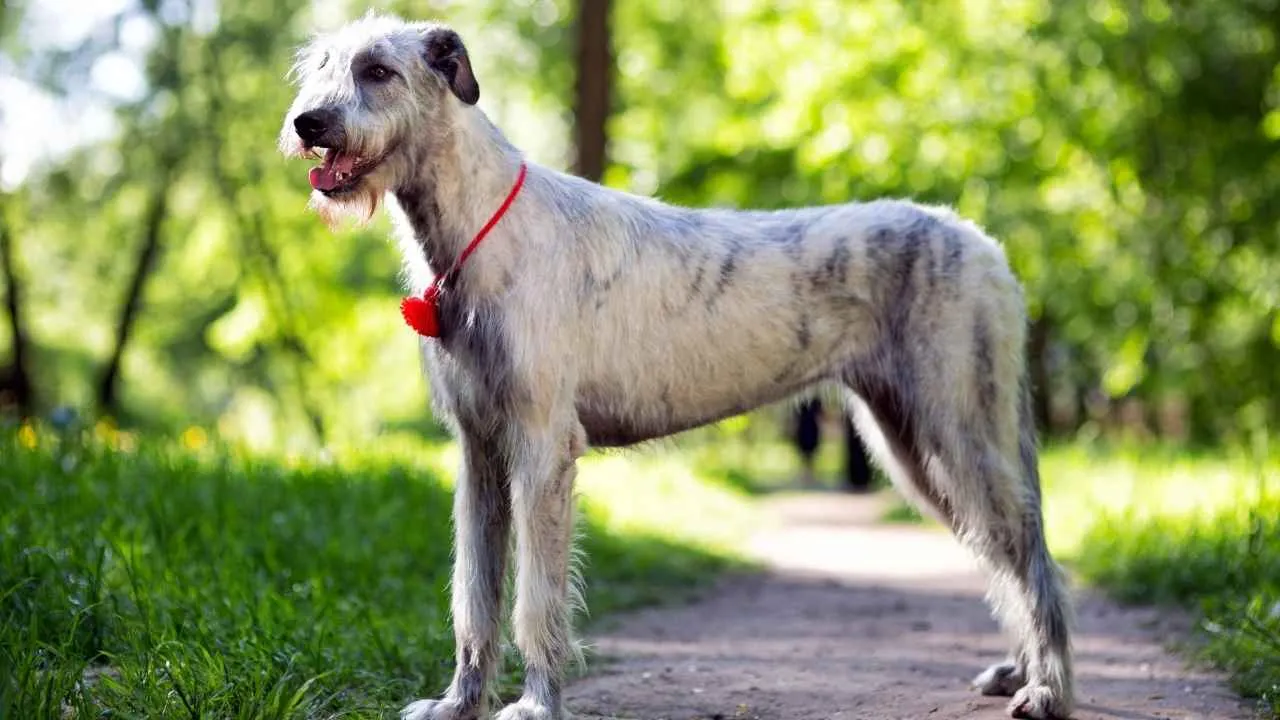
A Giant Hunter with a Gentle Soul
The Irish Wolfhound, a majestic breed from ancient Ireland, was once revered for its power and courage in battle and the hunt. Originally bred to hunt wolves, elk, and boar, these hunting dogs symbolized strength and nobility among Celtic warriors and Irish chieftains.
Their towering stature and calm confidence made them both fearsome hunters and beloved guardians of their people.
Calm Nature, Shorter Lifespan
Despite their imposing size, Irish Wolfhounds are known for their serene and affectionate temperament. They enjoy moderate exercise like long walks or open runs, but are otherwise gentle giants who love to relax at home.
Sadly, like many large breeds, their lifespan is relatively short—typically 6 to 8 years—making their quiet loyalty all the more treasured, as per the AKC.
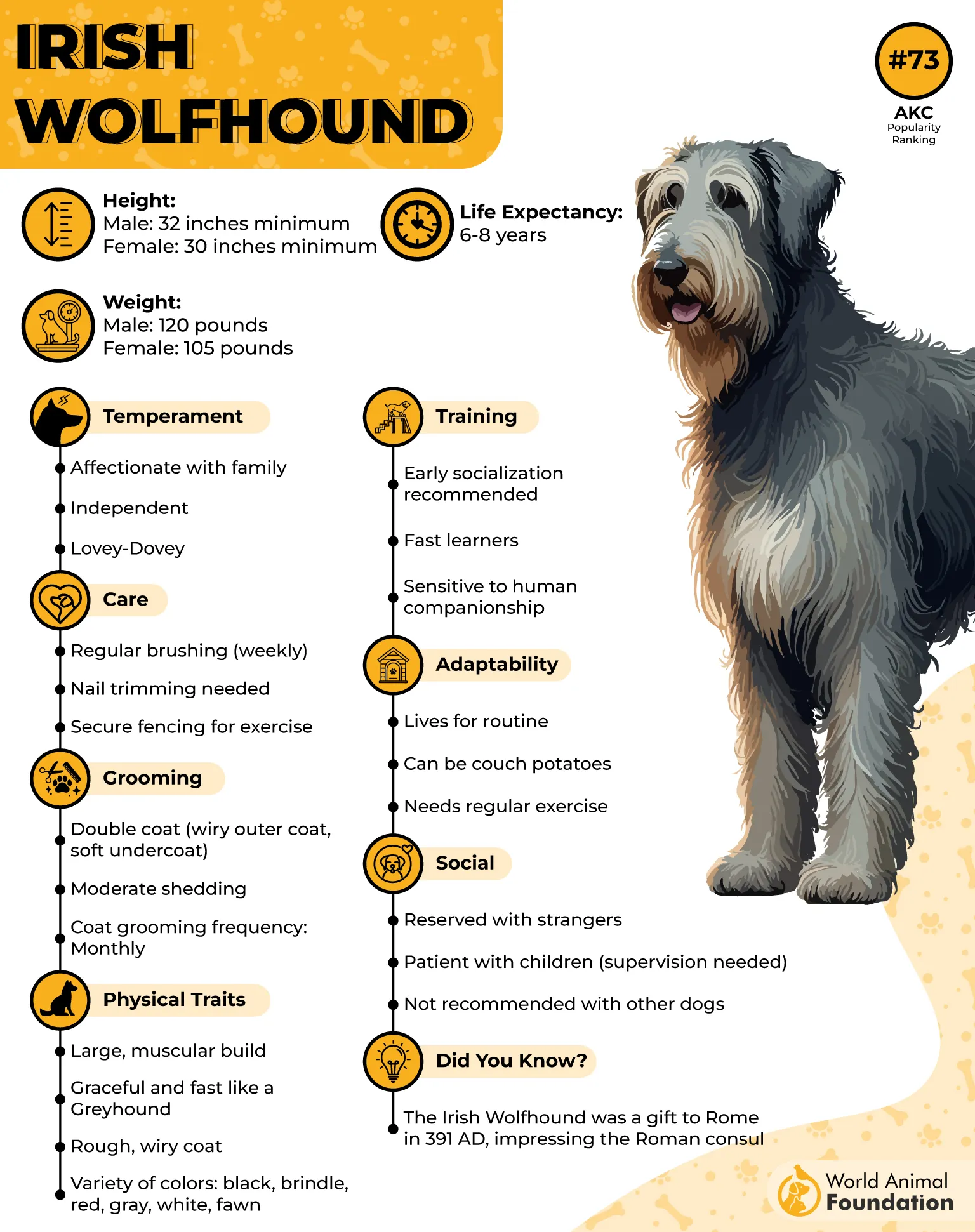
Coat Care and Health Considerations
The Wolfhound’s rough, wiry coat requires weekly brushing to prevent tangles and maintain its rugged charm. Health-wise, they are prone to potential health issues such as heart disease and bone cancer, so regular veterinary care is essential. A balanced diet and controlled exercise can help extend their years in comfort.
Loyal Yet Reserved
Irish Wolfhounds are deeply devoted but tend to show affection in subtle, dignified ways. They bond strongly with their families and are exceptionally gentle with children and smaller pets.
Though they may appear aloof to strangers, their calm loyalty and quiet presence make them one of the most endearing companions in the canine world.
2. Scottish Deerhound
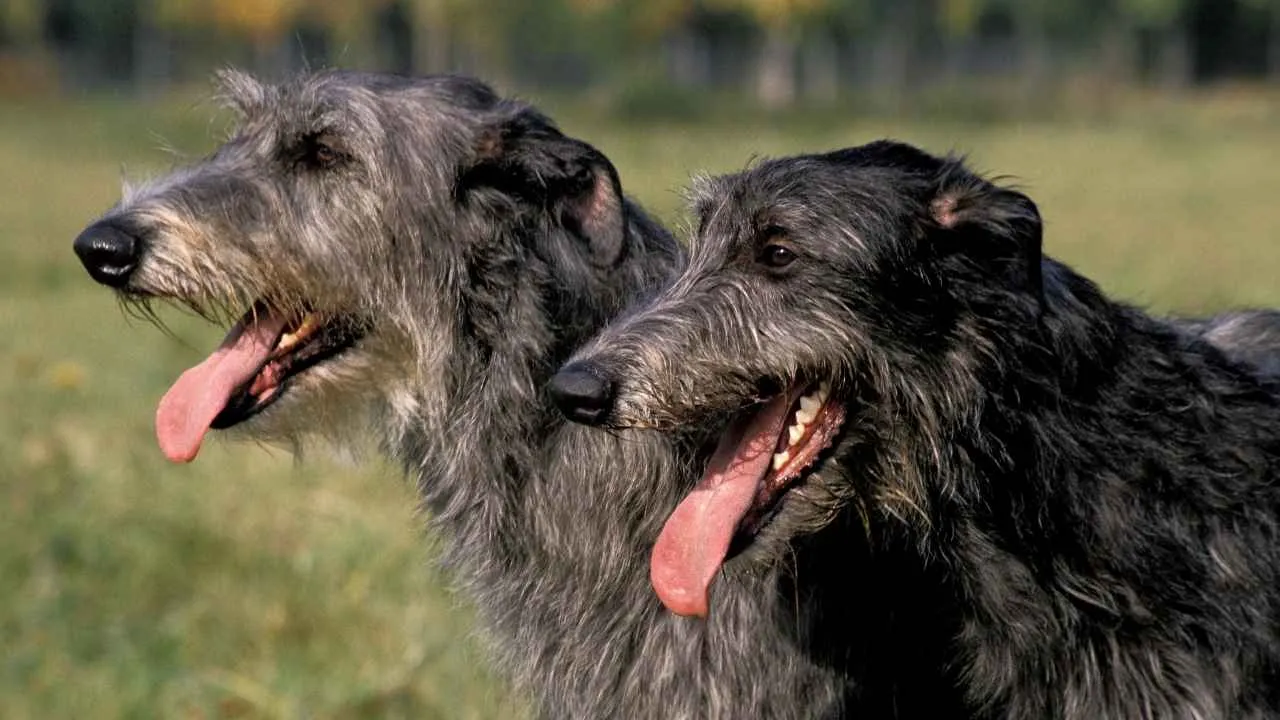
A Noble Hunter of the Highlands
The Scottish Deerhound, often called the “Royal Dog of Scotland,” was bred to hunt the majestic red deer across the rugged Scottish Highlands, as per WebMD.
With origins dating back centuries, these elegant sighthounds were prized by nobility for their speed, endurance, and grace in the chase. Their tall, wiry frame and gentle demeanor made them symbols of both strength and refinement.
Graceful Athlete, Peaceful Companion
In the field, the Deerhound moves like poetry in motion — graceful, focused, and powerful. But at home, this muscular build transforms into a tranquil shadow, content to sprawl across the sofa or rest its long muzzle on your knee.
While they need daily walks and open space to stretch their legs, their calm nature makes them dream companions for those who appreciate quiet company. Their lifespan, usually 8 to 11 years, reminds us that even the most timeless souls are fleeting gifts.
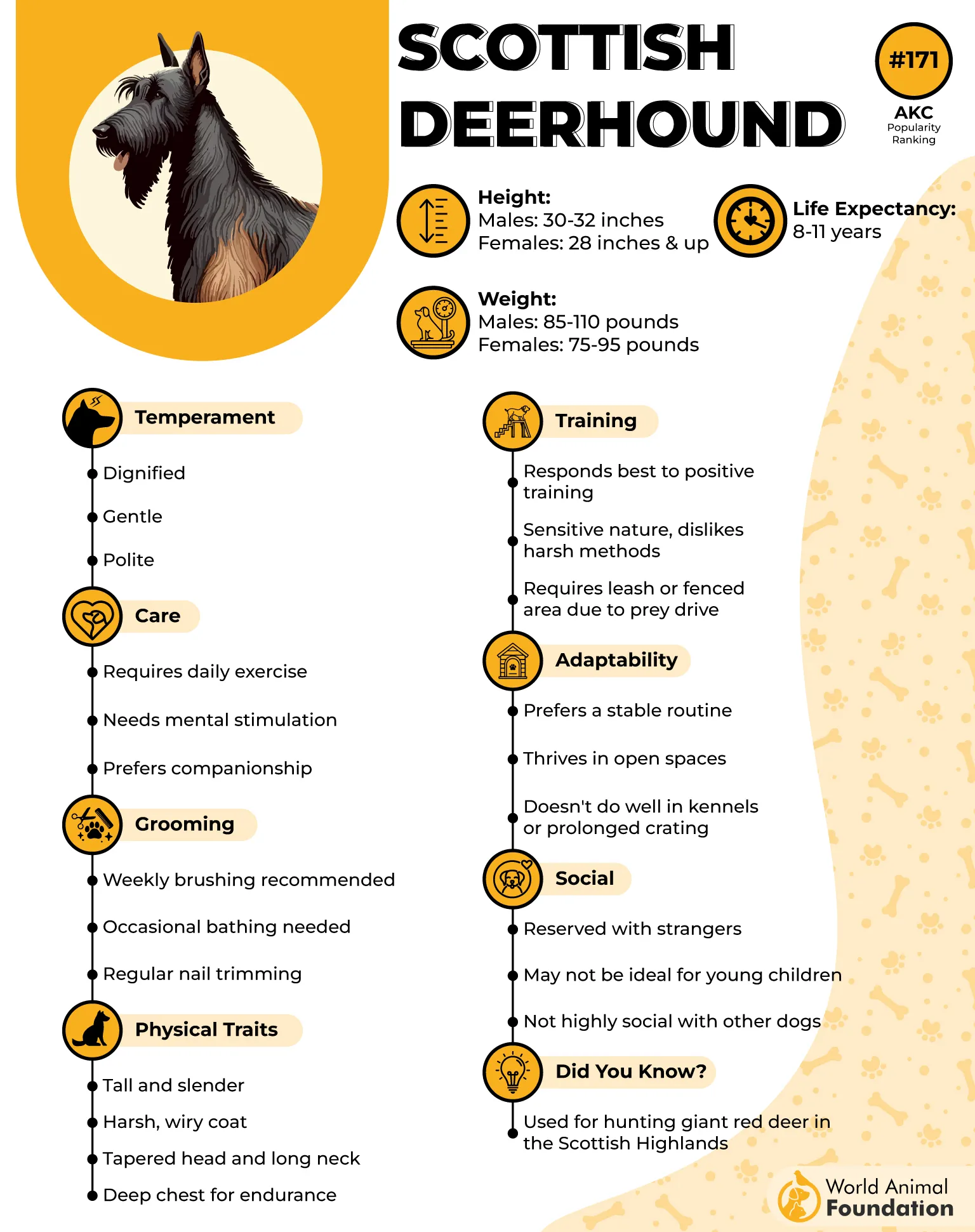
Coat Maintenance and Health Awareness
The Scottish Deerhound’s rough, shaggy coat needs weekly brushing to prevent matting and maintain its weather-resistant quality. Health-wise, they may face concerns like heart disease, bloat, or bone-related issues, so attentive care and gentle exercise are key. A nutritious diet and routine checkups help them stay active and comfortable throughout life.
Gentle Spirit, Quiet Loyalty
Though they were once fierce hunters, Deerhounds are known today for their tender hearts and calm intelligence. They bond deeply with their families, displaying affection through quiet closeness rather than exuberant energy.
With their noble stature and soulful eyes, they embody a rare mix of elegance, devotion, and serene companionship.
3. Presa Canario
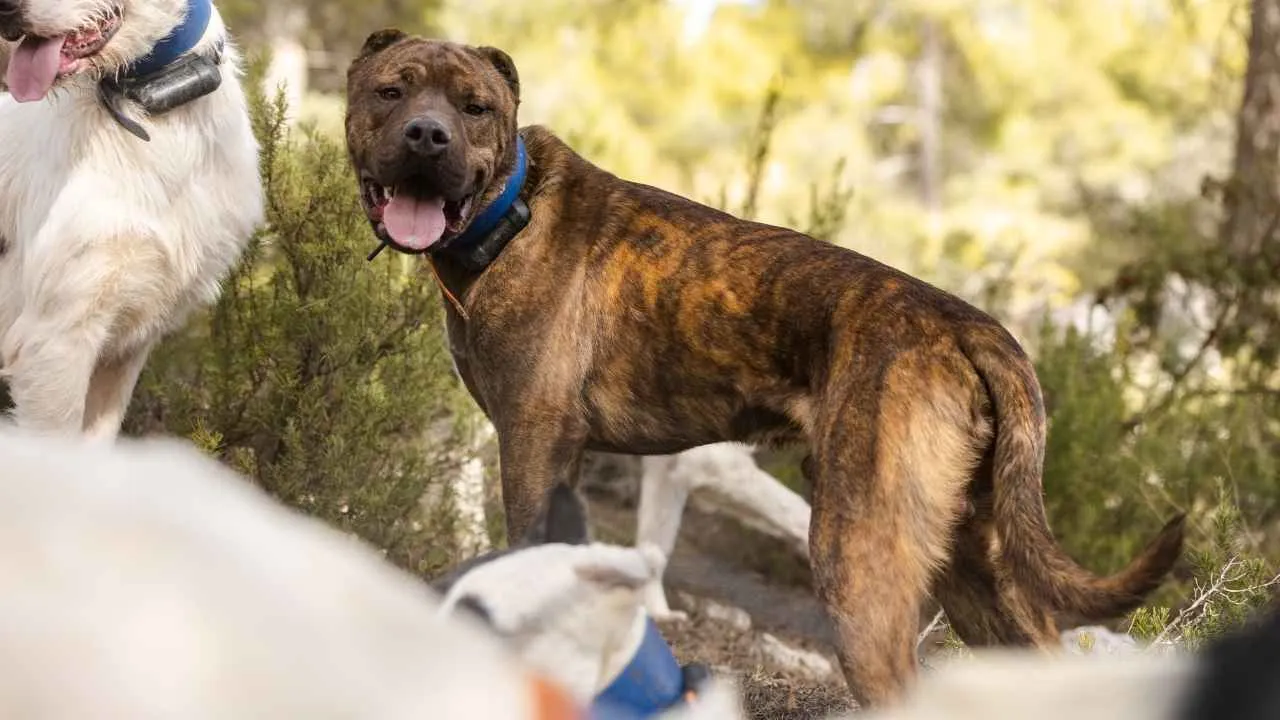
A Strong Guardian with a Gentle Heart
The Presa Canario is a robust, medium-to-large molossoid dog, originally bred for herding cattle and guarding farms. With a deep bark and black mask, they are known for their calm, confident demeanor.
While protective of their family, they can be wary of strangers and require firm, consistent training to thrive in a home environment.
Intelligent and Independent, but Short-Lived
Presa Canarios are highly intelligent, loyal, and devoted to their families, but they can also be independent and cautious.
They typically have a life expectancy of around 9 to 11 years, which is relatively short for a breed of their size, as per PetMD. Their lifespan is marked by their intense work ethic, though they do well in homes that offer attention, guidance, and daily exercise.
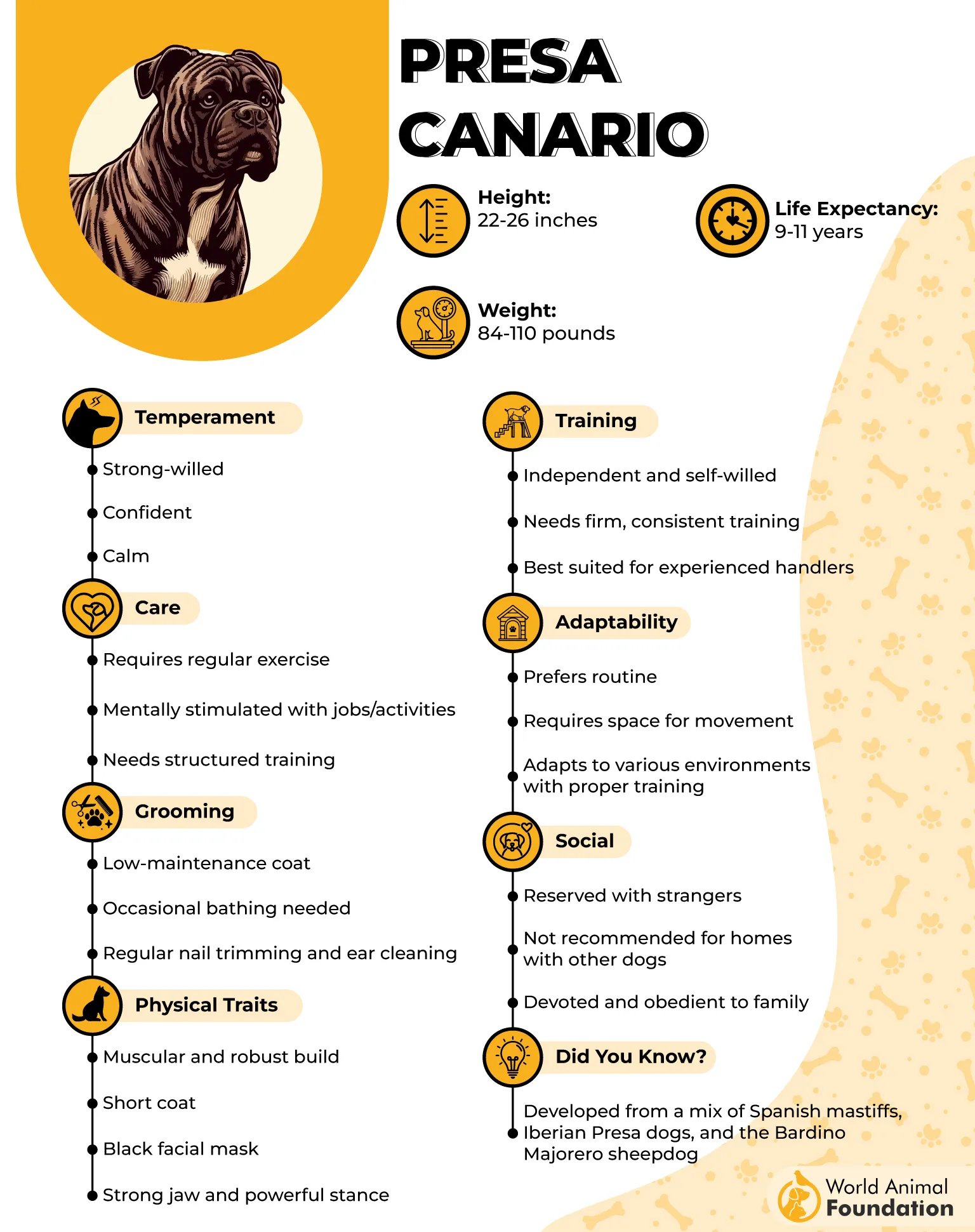
Simple Grooming, Strong Health Needs
With their short, coarse coat, Presa Canarios are low-maintenance in terms of grooming. However, their large, powerful frame makes them susceptible to joint issues like hip and elbow dysplasia. Regular vet visits and joint supplements can help keep them comfortable and active throughout their lifespan.
Loyal Yet Reserved
Although Presa Canarios are affectionate with their families, they can be aloof or even aggressive toward strangers.
Due to their high prey drive, they may not be suitable for multi-pet households. With proper training and care, they make exceptional, loyal companions, but their strong territorial instincts require an experienced owner.
4. Leonberger
A Majestic and Affectionate Giant
The Leonberger, with its lion-like mane and imposing size, is a majestic yet gentle breed. Originally bred in Leonberg, Germany, these dogs were created to resemble the lion on the town’s crest, according to Hill’s Pet.
Despite their large stature, they are affectionate, playful, and intelligent, making them wonderful companions for families and other pets.
Active but Short-Lived
Despite their calm demeanor at home, Leonbergers require a significant amount of exercise—at least an hour of activity each day. They love outdoor activities like hiking, swimming, and carting. However, due to their large size, their life expectancy is typically shorter, ranging from 8 to 10 years.
Grooming and Health Considerations
With their long, waterproof coat, Leonbergers shed quite a bit and need regular grooming, especially during shedding seasons.
Their thick coat helps them in colder environments, but their size can make them prone to joint issues. Regular vet check-ups and maintaining a healthy weight are key to their well-being.
Affectionate and Protective Nature
Leonbergers are known for being calm, affectionate dogs, and great with children, though their large size requires supervision around young kids.
They are loyal to their family and protective by nature, though they do well with strangers if properly socialized early. Their strong bond with their owners makes them fantastic, loving companions.
5. Dogue de Bordeaux
A Fearless Guardian with a Tender Heart
The Dogue de Bordeaux, often called the French Mastiff, is one of France’s oldest and most powerful breeds. Originally bred to guard estates, pull carts, and even protect nobles, this muscular dog carries centuries of courage in its massive frame.
Behind its wrinkled face and soulful eyes lies a fearless protector who would stand firm against any threat — yet melt into affection for its family.
Powerful Presence, Gentle Nature
Though their looks may seem intimidating, Dogues are calm, loyal, and deeply affectionate with their loved ones. They enjoy moderate exercise — a couple of daily walks and some playtime are enough to keep them content.
True to their giant breed nature, they have a life expectancy of around 8 to 10 years, filling each day with warmth, devotion, and quiet strength.
Short Coat, Steady Care
Their smooth, fine coat is easy to maintain, needing only occasional brushing to keep its natural shine. However, these heavy-set dogs require care with diet and activity to prevent obesity and joint issues. Regular vet visits help monitor their heart and hips, ensuring this gentle giant enjoys a comfortable, healthy life with great immune health, too.
Devotion Wrapped in Strength
Beneath their broad chest beats the heart of a loyal companion who craves closeness more than command. These loving dogs form deep, emotional bonds with their families and are especially protective of children.
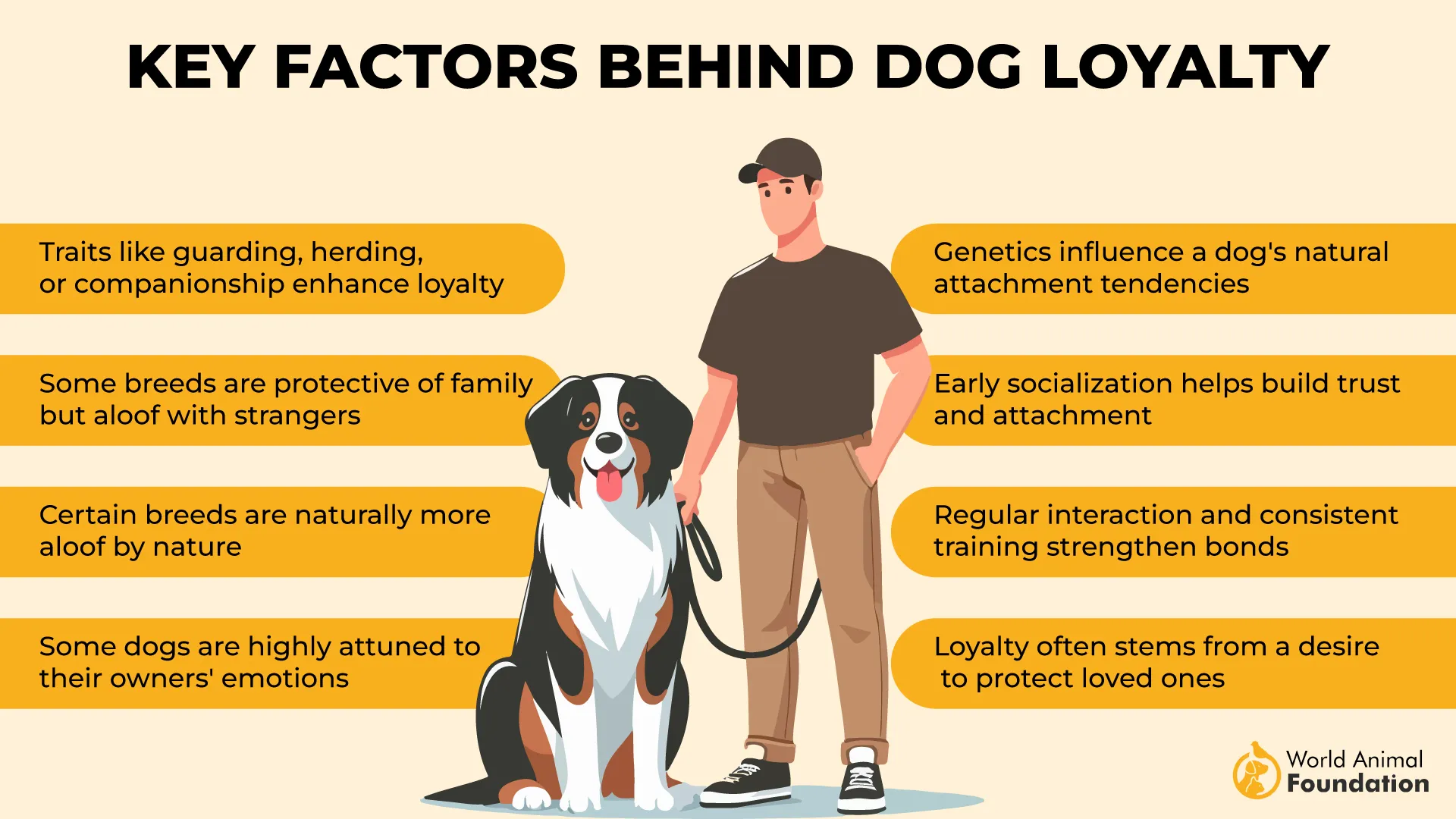
They may look like warriors of old France, but those who know them understand — the Dogue de Bordeaux’s truest power lies not in muscle, but in the depth of its love.
6. Komondor
A History of Fierce Protection
Originating from Hungary in the 9th century, the Komondor was bred to protect herds from predators like wolves and bears.
With their ancient lineage tied to the Huns, they became trusted guardians for nomadic flocks, as per PDSA. Their iconic white, corded coat allowed them to blend seamlessly with the sheep they protected.
Exercise Requirements: Calm Yet Alert
Though the Komondor is a natural protector, it is not overly active. They’re typically stationary in a guarding position, requiring minimal exercise compared to other breeds.
A couple of daily walks are enough to keep them content, but their alertness ensures they’re always ready to respond to any threats.
Coat Care: A Full-Time Job
The Komondor’s distinctive corded coat requires consistent maintenance. Weekly grooming, biannual shedding sessions, and occasional trimming are essential for keeping their coat clean and healthy, though bathing and drying them is a time-consuming task.
Training: Independent Yet Devoted
They need early socialization and obedience classes to ensure they behave around strangers and other pets. While they can be affectionate with family, their strong protective instincts may make them wary of outsiders, making early guidance crucial for a harmonious household.
7. Neapolitan Mastiff
A Legacy of Guardianship
The Neapolitan Mastiff is a breed with deep historical roots, descending from the ancient Molossus dogs used by the Romans in battle and as guardians.
Known for their intimidating presence, they were once utilized as war dogs, guarding estates and scaring off intruders with their size and strength. Their fierce loyalty and protective instincts remain strong to this day.
The Ultimate Protector
A truly massive breed, the Neapolitan Mastiff’s stocky frame and impressive size make it one of the most commanding dogs. With their deep wrinkles and loose skin, they present a formidable, yet loyal appearance, ideally suited for guarding duties.
Low-Key and Steady
Despite their size and power, Neapolitan Mastiffs are relatively low-energy and don’t require intense exercise. A couple of daily walks and some gentle playtime will suffice.
However, because of their massive stature, they can be clumsy, so extra caution is needed during play to avoid accidental injury to themselves or others.
Minimal Maintenance, but Drool Considerations
With a short, smooth coat, grooming a Neapolitan Mastiff is relatively easy. A weekly brushing will help manage shedding, and occasional baths will keep them clean. Keeping their face and skin folds clean is important to avoid skin infections.
Conclusion
In conclusion, rare breeds known for their shorter lifespan often face health concerns like heart disease and joint issues. These breeds require attentive care, including a balanced diet and regular exercise, to manage potential health risks. Pet parents should be aware of these challenges to ensure a good quality of life for their dogs.
Large breeds are susceptible to obesity, joint issues, and other health conditions. Regular grooming, exercise, and weight management are key to their health and longevity. Addressing these health needs early can help mitigate the risk of serious health issues.
Though these large breeds have a shorter lifespan, their affectionate, protective, and gentle nature brings immense joy to families. By understanding their unique characteristics and maintaining proper health care, owners can help their dogs live happier, healthier lives despite their shorter lives.


